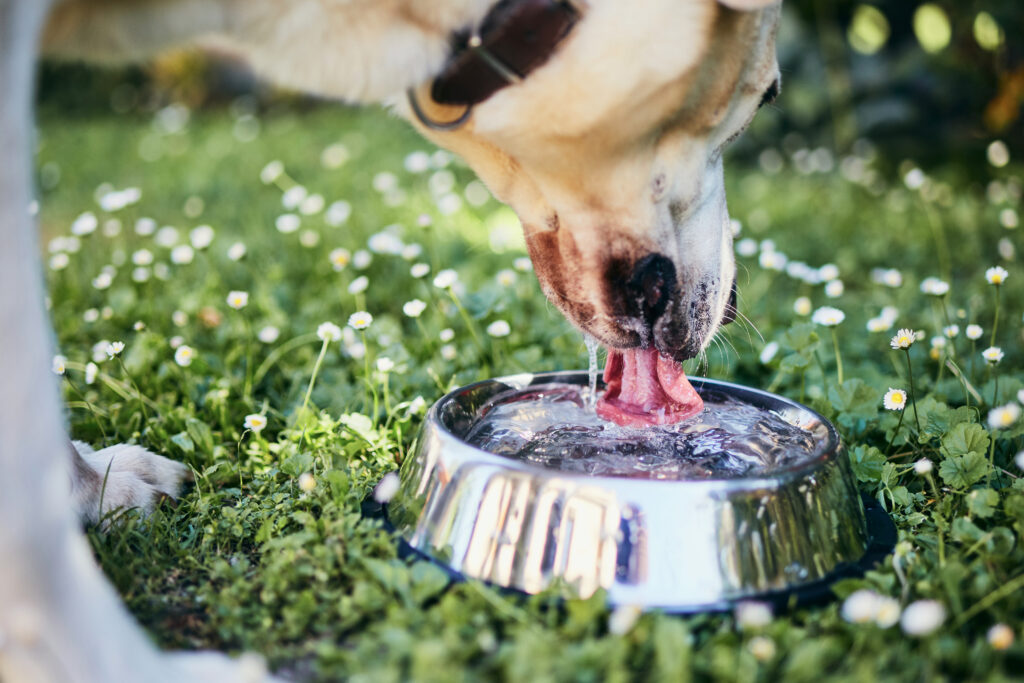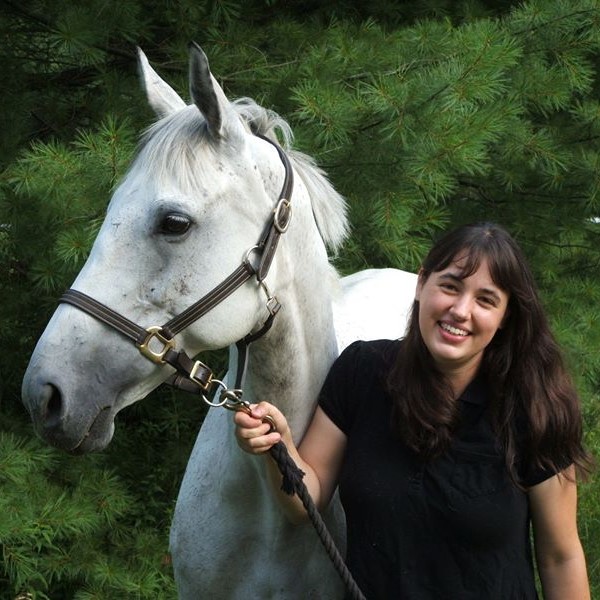Good nutrition is key to your best friend’s health at any age, but it’s particularly important for puppies. Since puppies undergo rapid growth during their first year of life, nutrition plays a key role in helping them to stay healthy and grow strong bones and muscles.
By feeding your new puppy the right amount of quality food, you’ll help them to start life off on the right paw. But what’s the right amount, and how do you know choose the appropriate grub?
Puppy nutrition 101
Puppies grow a tremendous amount during their first year of life, as the rest of their bodies catch up to those adorably huge paws.
According to the American Kennel Club, here’s how long it will likely take your pup to reach their adult size:
- At 12 months old, small breeds (up to 20 pounds) are fully grown
- Medium breeds (21-50 pounds) are 95% grown
- Large breeds (51-100 pounds) are 85% grown
- Extra-large breeds (weighing more than 100 pounds) are about 80% grown by the time they’re a year old
All of that growth requires plenty of nutrition, meaning your puppy needs to eat high-quality food. Specially formulated puppy foods deliver that high nutritional content.
Puppy foods are available in both small breed and large breed formulas. Believe it or not, your small breed puppy needs more calories-per-pound than a large breed puppy does, since small puppies have faster metabolisms than larger breeds.
As a result, it’s important to choose a puppy food that’s appropriate for your pup’s breed size. Formulas for small breeds also feature smaller kibble, which are easier for smaller pups to chew.
How much should you feed a puppy?
Many factors will affect how much you need to feed your puppy, but this handy puppy feeding chart can help you to get started.
You’ll base your puppy’s feeding amounts off of their ideal weight once they’re a full-grown adult dog. If you adopt a mixed-breed dog, and aren’t sure about how much they’ll grow, your vet will be able to give their best estimation.
The below portions reflect the total amount of dry kibble that you should feed your puppy in a 24 hour period.
| Ideal weight of your mature dog (lbs) | Weaning–12 weeks | 4–5 months | 6–8 months | 9–11 months | 1–2 years |
|---|---|---|---|---|---|
| 3–12 | ½–1 cup | ⅔ – 1 ⅓ cups | ½–1 ½ cups | Adult portion | Adult portion |
| 13–20 | ½–1 ¼ cups | 1 ⅛–2 cups | ¾–1 ⅓ cups | 1–1 ½ cups | Adult portion |
| 21–50 | ½–1 ½ cups | 1 ½–2 ¾ cups | 1 ⅛–2 ⅓ cups | 2–3 cups | 2–4 ¼ cups |
| 51–75 | ⅝–2 ⅓ cups | 1 ½–4 cups | 1 ½–3 ¾ cups | 2 ½–4 ¾ cups | 2 ⅝–6 ¼ cups |
| 76–100 | 1–2 ⅔ cups | 2 ⅞–3 ¾ cups | 2 ⅞–6 ⅓ cups | 3 ⅞–7 cups | 5 ⅝–11 cups |
| 100+ | 2 ⅔ cups plus ⅓ cup for each 10 pounds of body weight over 100 pounds | 3 ¾ cups plus ⅓ cup for each 10 pounds of body weight over 100 pounds | 6 ⅓ cups plus ⅓ cup for each 10 pounds of body weight over 100 pounds | Adult portion 7 cups plus ⅓ cup for each 10 pounds of body weight over 100 pounds | 11 cups plus ⅓ cup for each 10 pounds of body weight over 100 pounds |
While this chart offers some guidelines, you will need to consider your puppy’s unique caloric and nutritional needs to decide the amount of food they need. Some breeds naturally need fewer calories than others. For example, Border Collie pups are high-energy, high-activity puppies, and will need more calories than a relatively sedentary Basset Hound pup might need.
Different foods will also vary in the nutrition and calories they provide. You’ll need to consult the feeding guidelines for the type of food that you give your puppy.
That can be a lot to figure out. Your vet can help you to determine the best feeding program for your puppy, and can also monitor your puppy’s weight and body condition to make sure they’re healthy and their growth is on track.
Speaking of the vet: Lemonade Pet offers a preventative care package designed especially for puppies and kittens. If you sign your puppy up for dog insurance, you can get them covered for up to 6 annual vaccinations or boosters, spaying or neutering, microchipping, two annual wellness exams, heartworm and flea medication, plus blood and fecal tests.
When should you feed a puppy?
Younger puppies need to be fed more frequently than older puppies, so it’s important to gradually change your pup’s feeding schedule as they grow.
- When your puppy is less than three months old, you should take the total amount that you feed them per day and divide it across four meals
- Once your puppy is over three months old, you can transition to feeding them just three meals a day
- When your puppy reaches six months old, you can feed them just twice a day, and continue that schedule through adulthood
Try to schedule your puppy’s meals so that they’re evenly spaced throughout the day. Make sure that the last meal gives your pup plenty of time to digest before they have to go to bed.
FYI: Young puppies will need to go outside as soon as 15 minutes after they eat, while older pups can wait for a potty break 20 to 30 minutes after a meal.
Wet food vs. dry food
You’ll have your choice of wet or dry food for your puppy—or you can feed them a combination of the two. Each type of food has its pros and cons.
Wet food offers more moisture than dry kibble, which can help to keep your puppy hydrated. Many puppies find wet food tastier and more appealing than dry, and it’s easier to chew. And if your puppy always wants to eat, wet food can leave them feeling fuller than a meal of dry food will.
Dry food has some advantages, too. It’s more convenient than wet food, and it’s often more affordable. Feeding your puppy dry food will encourage them to chew more than they would when eating wet food, and can promote dental health as a result.
At what age should a puppy transition to an adult dog diet?
Once your puppy has matured, they will be ready to transition to eating adult dog food. When exactly that is will depend on their breed and size.
For example, small dog breeds mature earlier, so you can transition a small breed puppy to adult food once they’re seven or eight months old. Large breed puppies mature more slowly, so you might need to keep them on puppy food until they’re 13 or 14 months old.
Your vet can help you to decide when your puppy is ready to make the switch.
How much water should puppies drink?
Water is essential to keeping your puppy hydrated and healthy. Newborn puppies get their hydration by drinking their mother’s milk, but once your puppy is eating solid food, they’ll need plenty of fresh water. Younger puppies will need to drink about a half-cup of water every two hours.
Older puppies should drink about a half-ounce to one full ounce of water for every pound of body weight, daily. So if your puppy weighs 30 pounds, they’ll need 15 to 30 ounces of water per day. These needs may increase in hot weather, or if your puppy is highly active.

What about puppy treats?
Treats can be valuable training tools for puppies, but it’s important to be conservative with how many treats you give your pup.
Choose low-calorie treats and make sure that those treats make up no more than 10% of the calories your pup eats each day. Overfeeding puppy treats can quickly lead to obesity, which can cause all sorts of health issues, like joint and heart problems.
Puppies can eat “people food” as treats, but it’s important to be conservative here, too. Cooked white rice and boiled chicken or fish are generally safe, and many puppies will enjoy bits of apples and carrots. Make sure that these foods are prepared without any spices, oils or butter, which can cause digestive upset.
Before we chow down…
Making sure your puppy gets the nutrition they need is a key part of taking care of your pup. By choosing the right type of food and feeding the right amounts, you’ll help to keep your new best friend healthy, giving them the nutrition they need to grow.
While it’s always best to run any dietary changes and questions by your vet, choosing a quality puppy food and feeding the recommended amounts will get you off to a good start.





